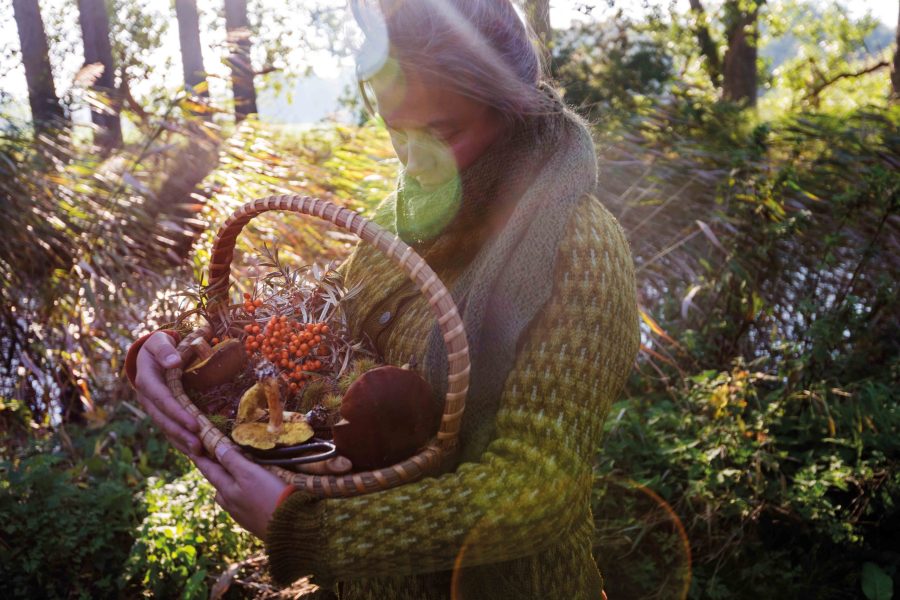Autumn has arrived! This time of year brings us more than cosy jumpers, pumpkin spiced lattes and crunchy leaves – it’s also the perfect season to try foraging! We take a look at the health benefits of foraging – from lowering stress levels to giving our immune system a boost – before diving into the best foods to forage for this autumn…
Being out in nature is known to help alleviate stress. You only need go to walking in the woods or by the coast and you’ll no doubt feel better than you did before you went.
Someone who knows about these benefits all too well is Belinda Blake, a registered nutritional therapist who discovered first-hand how effective nature is for helping to reduce stress.
Motivated to study nutrition in response to her own health problems, Belinda trained at the Institute for Optimum Nutrition (ion.ac.uk), so she could help others recover their health.
‘I was diagnosed with endometriosis in my early 20s and explored many different therapies to help relieve symptoms,’ she says. ‘Nutritional therapy had by far the biggest impact and this is what initially inspired me to study it at ION.’
She’s also since become a keen forager, believing wholeheartedly in the power of natural immunity to rebalance and refocus the mind and body.
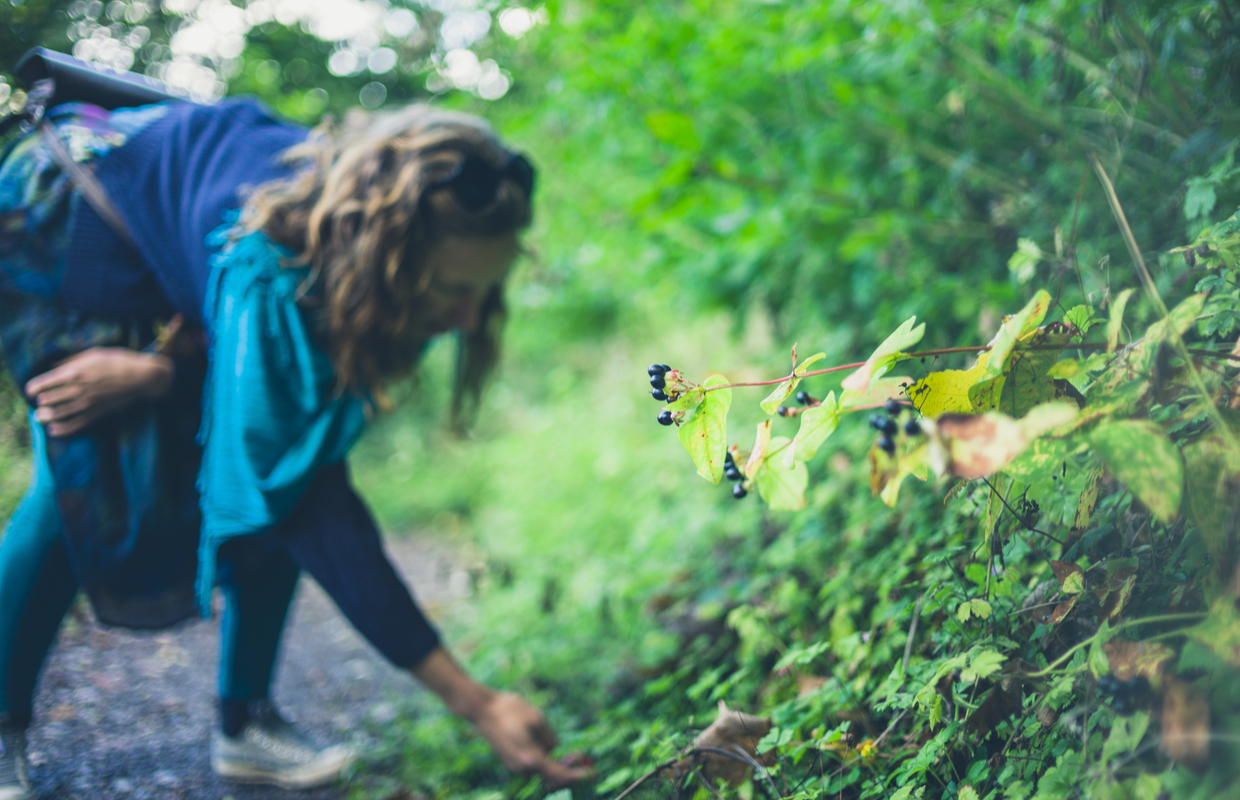
Foraging benefits for mental health
‘There are many benefits of foraging for mental health,’ says Belinda. ‘It has a calming influence – simply being outdoors, crunching through red and gold autumn leaves in the fresh air calms down your stress response.
After so much time living in our own heads and indoor spaces this past year-and-a-half, foraging is an incredibly grounding activity.’
Belinda first got into foraging about six years ago, when she spent an afternoon exploring the meadows and riverside close to where she lives in Surrey.
‘It was such an eye opener! I had no idea how much edible and medicinal food was on ourdoor step,’ she says. ‘At the time, I picked ramsons [wild garlic] and stinging nettles, which I made into a delicious pesto.’

Foraging helps us to connect with nature
Foraging can also help you engage more with the environment and connect to the seasons, appreciating the spectacular show nature puts on at this time of year, with the oranges, reds, yellows and browns.
Autumn is a beautiful time of year to forage, too. ‘It is a time of abundance, but also marks the transition and gradual slowing down of nature, which can have a calming effect on both mind and body,’ says Belinda.
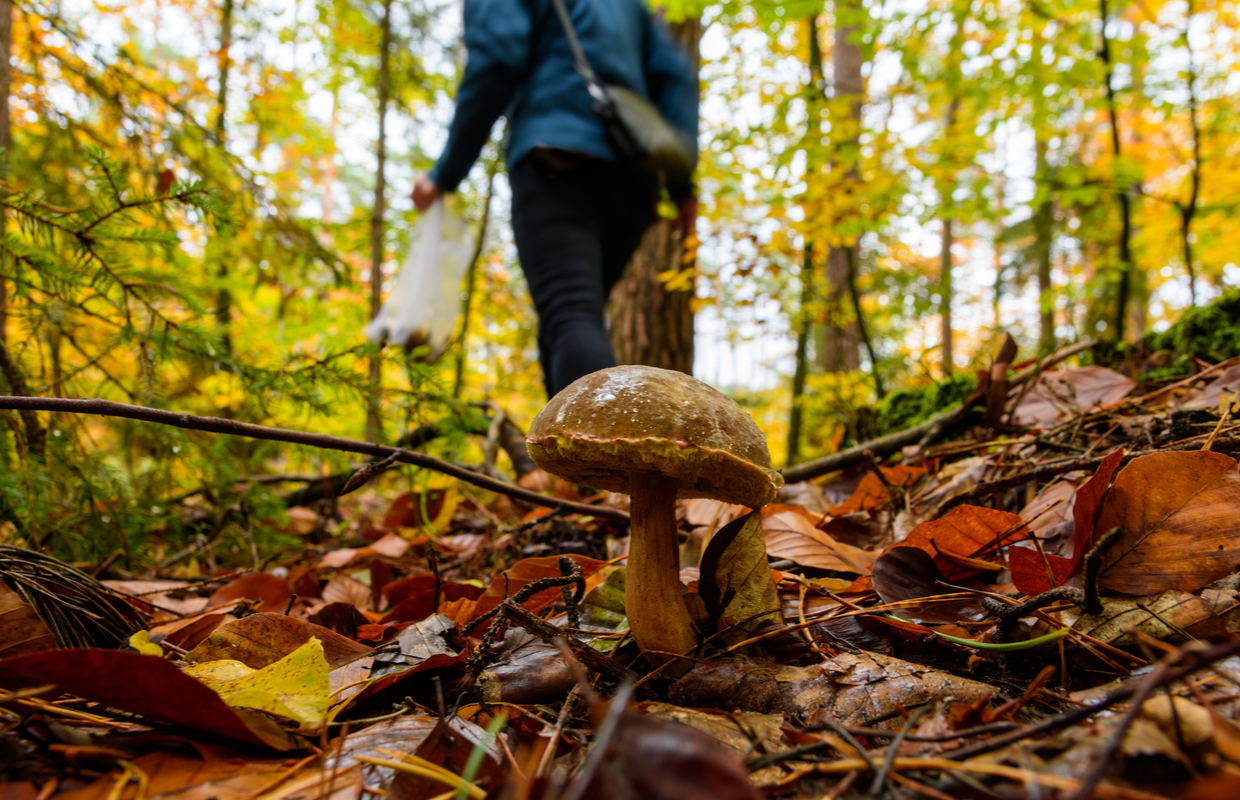
Foraging benefits for our immune systems
The natural world also has its own relaxing, aromatic fragrances that have healing benefits. ‘Nature provides its own aromatherapy in the form of phytoncides [essential oils] produced by evergreen trees, as well as oak.
‘These have been shown to decrease stress hormones and increase your natural killer immune cells, which are crucial for fighting off invading viruses and bacteria.’
Immune-boosting staples to forage for this autumn
It’s not just the fact of being outdoors that’s good for you – you’ll find lots of fruits, berries and nuts on offer if you look closely, many of which can lend a helping hand to your immune system as we move into winter.
‘Foraging provides access to really fresh and free food, which is full of nutrients and vitality to help support your immune and mental health,’ says Belinda. Here are her top picks if you’re new to foraging…
SAFETY NOTE: Always forage responsibly and make sure you are 100 per cent sure of what you are picking. Check the Foraging Code for full details on safe foraging and to ensure you comply with the law.
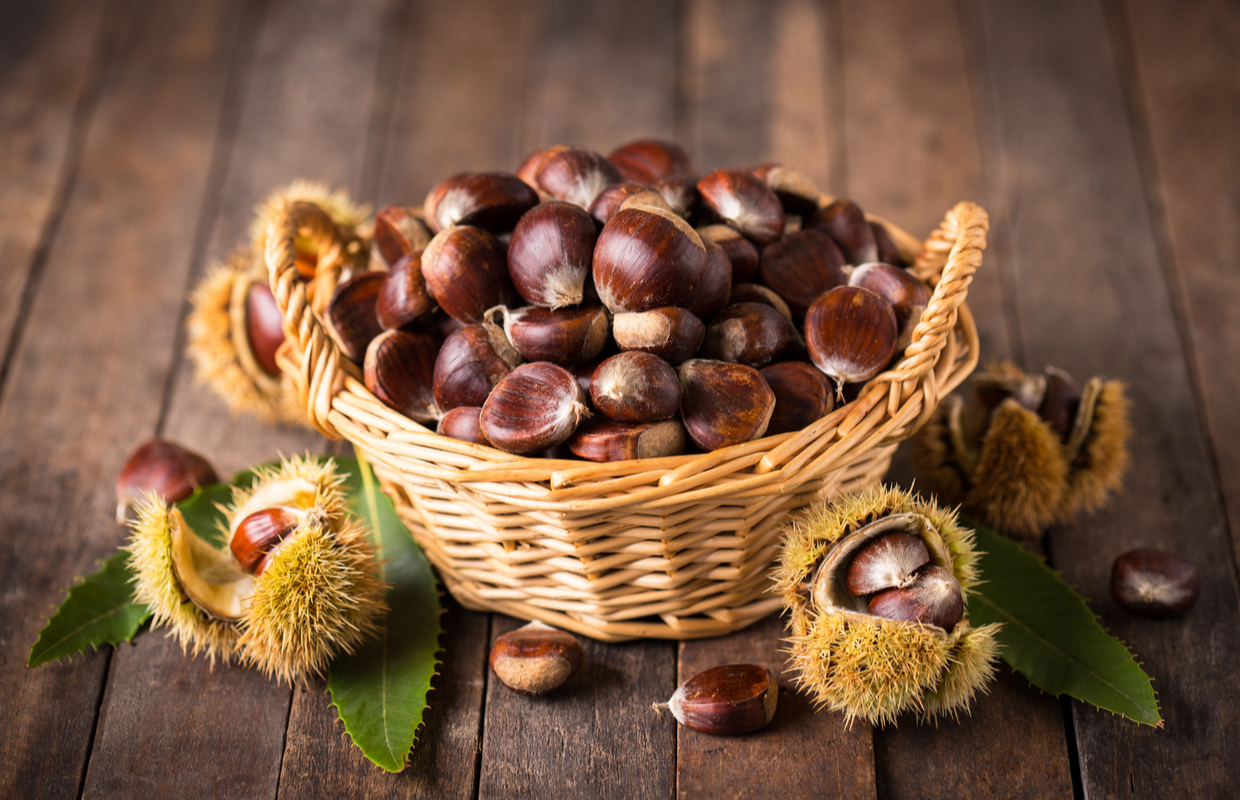
SWEET CHESTNUTS
The sweet chestnut is commonly found in parks and common land. Take care, however, as the fruits can look similar to inedible conkers from the horse chestnut so be sure to check you have the right tree!
It can be a race against time to beat the squirrels to these nuts, but it is worth the effort. They can be eaten raw, but are tastier roasted – and this makes it easier to remove their shells.
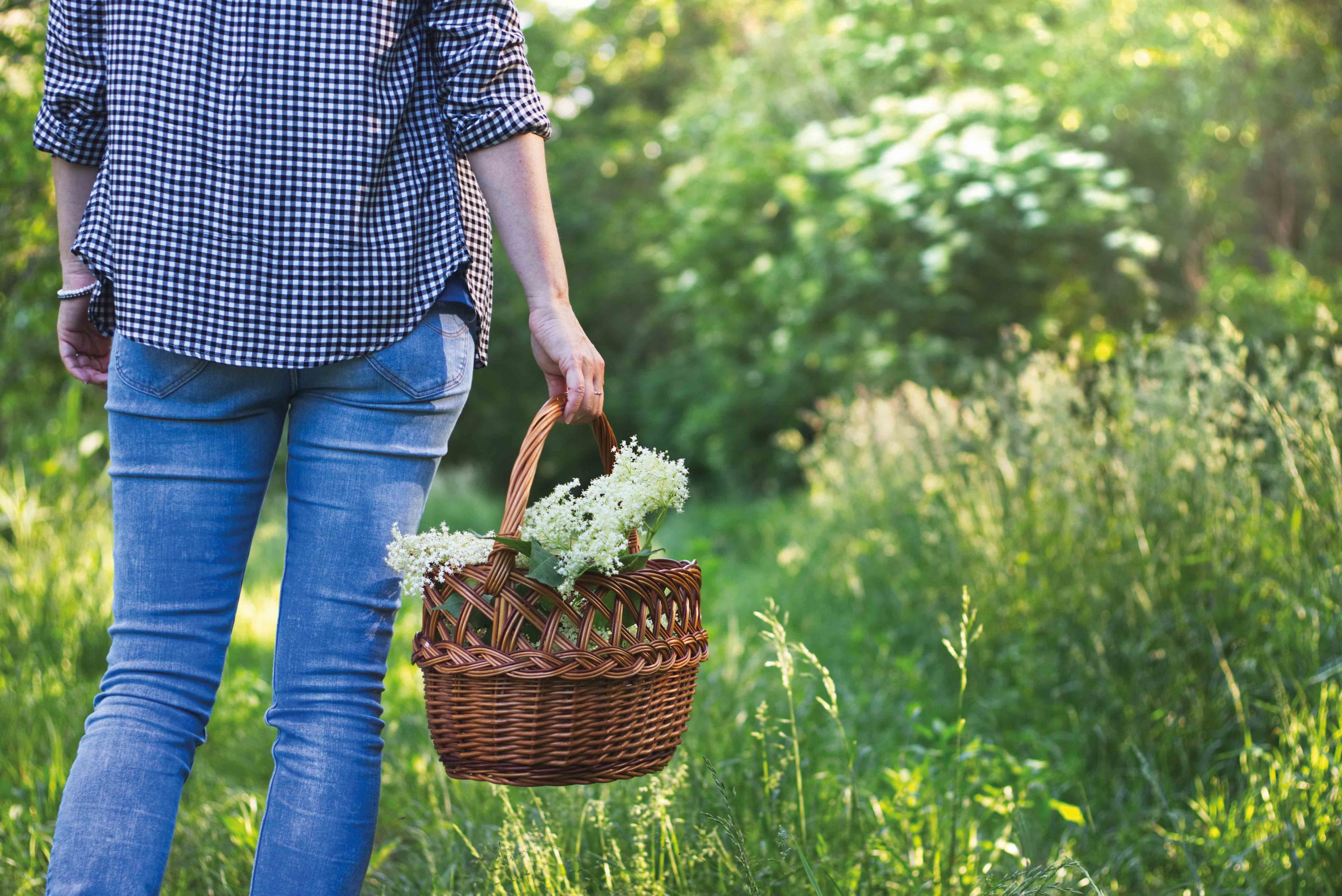
ELDERBERRIES
The creamy-white owers of the elder tree mark the beginning of summer. In contrast, the arrival of its berries herald summer’s end.
Elderberries are rich in vitamin C and antioxidants. You can make them into a delicious syrup, which, with the addition of warming spices such as clove and ginger, may help protect against colds and viruses. It is fascinating that nature provides just what we need at the right time.
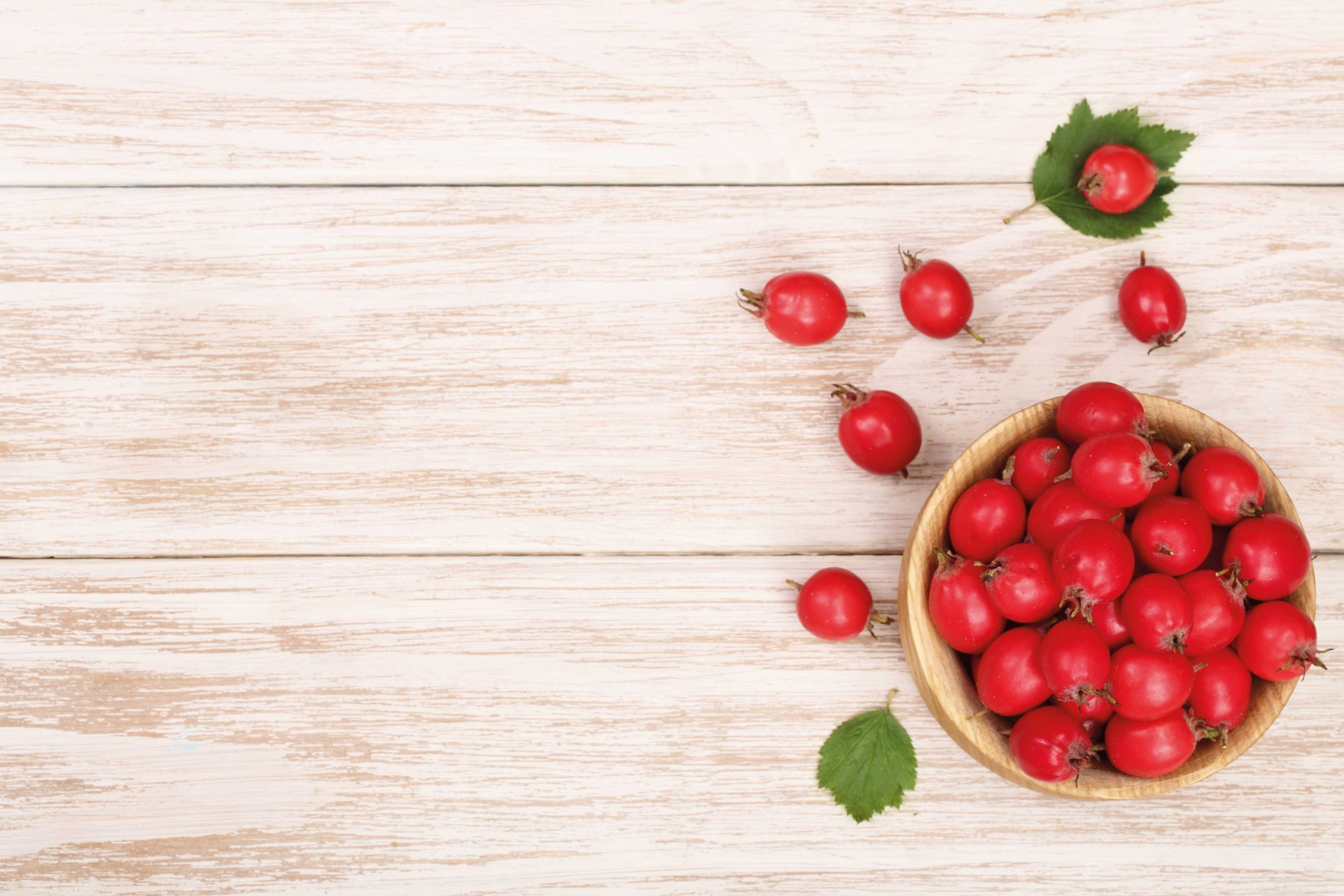
HAWTHORN BERRIES
Haws are the fruits of the hawthorn tree, which is often found in hedgerows. The bright redberries may look similar to the rose hips when you first glance at them – although they may also come in shades of orange and even yellow – but the distinctive leaf shape of the hawthorn will help you identify this fruit.
The berry has an affinity with the heart, and herbalists use both the berries and leaves to support cardiovascular health. It’s the colourful chemicals in the hawthorn berry that provide the benefit.
Like elderberries, hawthorns need to be cooked and the pip removed. However, they do make a wonderful addition to a hedgerow jelly or an autumn fruit leather.
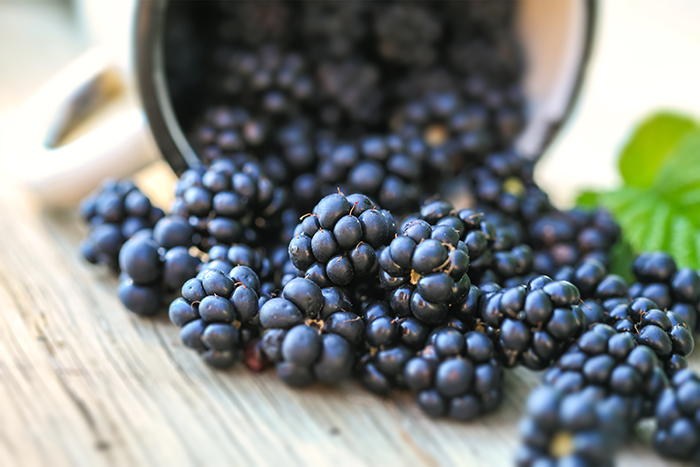
BLACKBERRIES
These dark berries start appearing from late summer, so be on the lookout in hedgerows and along roadsides. Easily recognisable, these juicy berries are rich in fibre and nutrients.
Their dark purple colour comes from anthocyanidins, plant chemicals shown to help reduce inflammation and support a healthy immune system.
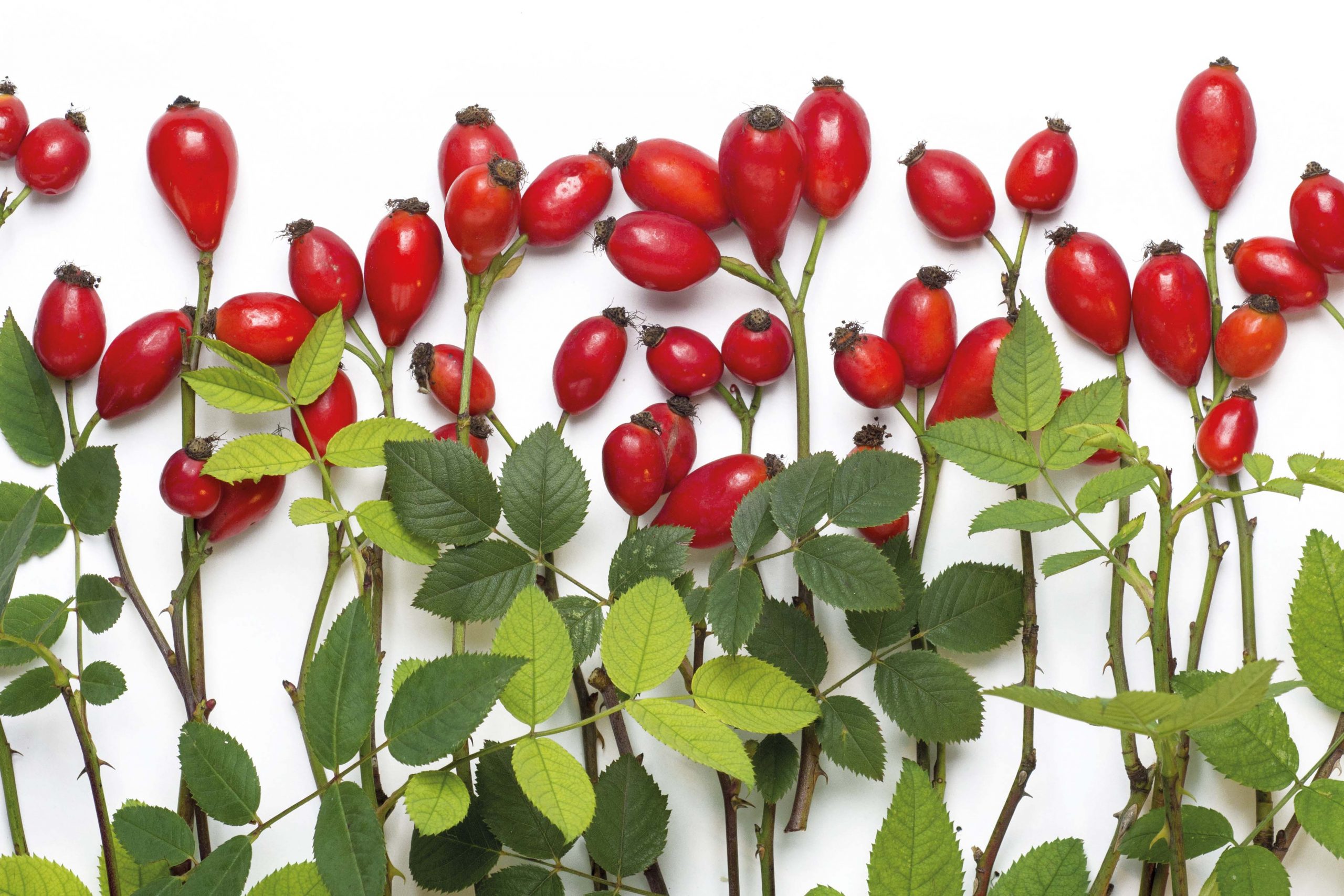
ROSE HIPS
In autumn, you are likely to see the hedgerows dotted with the vermillion hips of the dog rose. The flesh is fruity and has a tartness that is explained by the large amount of vitamin C it contains.
Take care, however, as in the centre of the fruit are tiny seeds and hairs that can be an irritant to the throat. In fact, they have been traditionally used to make itching powder!
Rose hips can be dried to make a tasty tea. Alternatively, like the elderberries, you can cook them into a delicious syrup. This will help to support the immune system throughout the winter months.
The syrup can be enjoyed as a drink, diluted with sparkling water or kefir. Or, you could even try it with some sparkling wine or a gin and tonic.
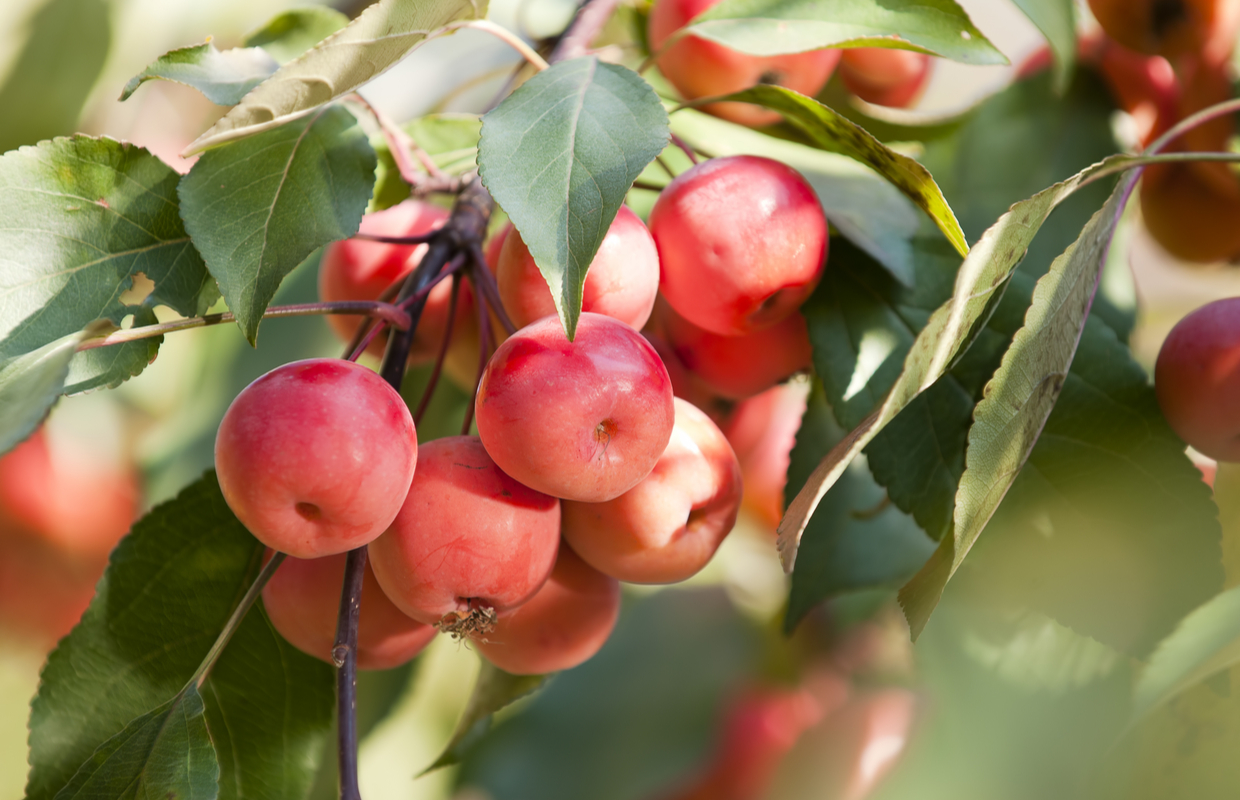
CRAB APPLES
These tiny, sour apples are commonly found on trees lining streets or on common land. Inedible raw, they make a fantastic base for jams and chutneys or can be pureed and dried into fruit leathers.
Looking for more foraging guidance?
Why not find a foraging class near you at wildfooduk.com? ‘And you could also invest in a good wild plant identification guide to help get you going and pick safe,’ says Belinda.
‘One of my current favourites is the Foraging Pocket Guide (£14.99). It contains great photographs and succinct, reliable information. Plus, its handy size makes it convenient to take out on rambles.
Find out more about Belinda and her adventures with wild food at eatyourselffab.wordpress.com or on Instagram. She also runs herb walks in Surrey with friend and medical herbalist, Janine Gerhardt.

